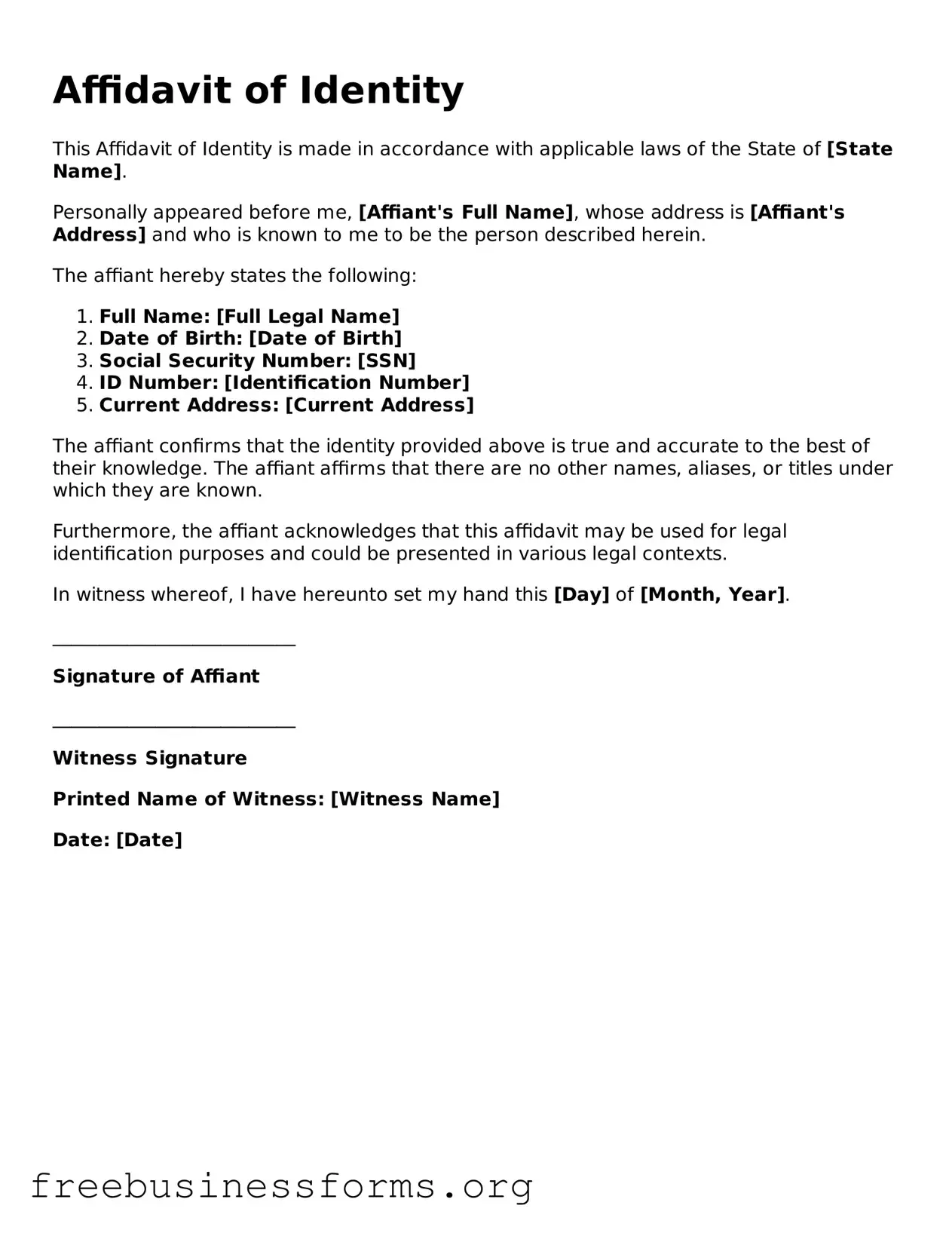Official Affidavit of Identity Form
The Affidavit of Identity form is a legal document used to verify a person's identity in various situations, such as when applying for a loan or resolving issues related to identity theft. This form typically requires the individual to provide personal information and affirm their identity under oath. Completing this affidavit can help protect against fraud and ensure that the correct individual is recognized in legal matters.
Open Form Here
